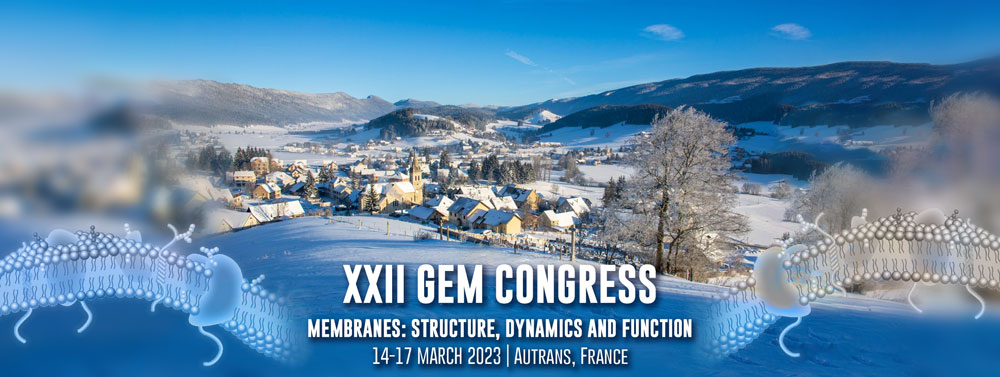Speaker
Description
The plasma membrane is a complex assembly of proteins and lipids that can self-assemble in transitory submicroscopic domains, commonly termed “rafts”. These dynamic structures are implicated in membrane signaling and trafficking. Artificial membranes composed of certain lipids mixed with cholesterol spontaneously phase-separate in liquid-ordered (lo) and liquid-disordered (ld) domains, which are proposed to have similar properties to those of lipid rafts of cells membranes [1]. Recently, photo-sensitive lipids were introduced to study membrane organization and biophysical properties in a non-invasive manner [2]. Light-triggered isomerization of these compounds modifies the geometry of lipids from a cylindrical shape to a conical one. In vitro studies performed with phase-separated lipid systems have shown that such a change of configuration greatly alters domain organization [3]. These findings raise the questions how does the configuration of photo-lipids impact lipid distribution in membrane domains and protein-lipid interactions.
Here, we used globotriaosylceramide glycolipids (Gb3) bearing a photo-sensitive group to study the influence of the isomerization on membrane domain organization. Using phase-separated lipid bilayers doped with photo-Gb3s, we found that the size of the domains was drastically modified when the photo-sensitive group is deeply embedded in the membrane. Since Gb3 constitute a natural receptor for the bacterial protein Shiga Toxin, we also investigated the impact of isomerization on lipid-protein interactions. Fluorescence microscopy images showed that Shiga toxin exhibited natural behavior in the presence of photo-Gb3s. As expected, the protein was found in the lo phase of the membrane. Interestingly, isomerization did not alter protein binding but led to the formation of clusters in the lo phase of the membrane. These findings can bring further understanding on the lipid raft concept given that a control of membrane lateral organization, protein-lipid interactions and cluster formation is accessible with this approach.
Keywords: photo-lipids, membrane domain, phase-separation, glycolipids, Gb3 receptor, Shiga Toxin
References:
1. Veatch and Keller, 2003. Biophys. J., 85 (5), 3074–3083.
2. Morstein et al., 2020. ChemBioChem, 22 (1) 73–83.
3. Frank et al., 2016. J. Am. Chem. Soc., 138 (39), 12981–12986.
Correspondence : larissa.socrier@ds.mpg.de
| Session | Glycobiology |
|---|

